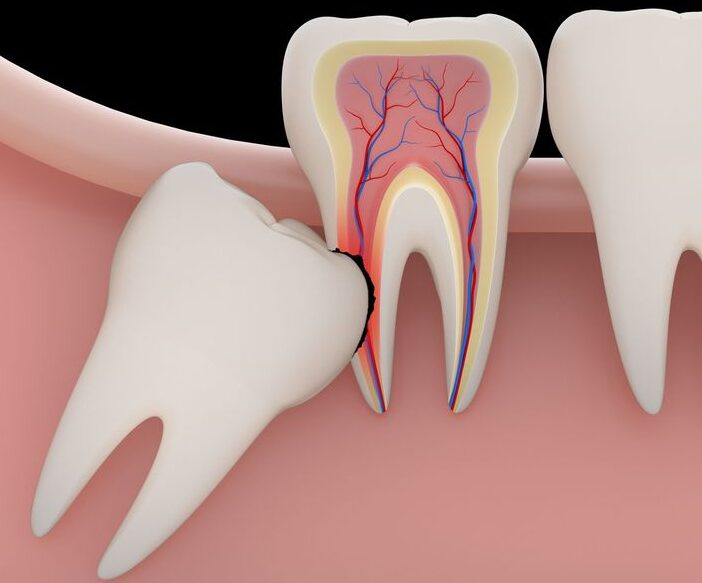
Tooth extraction is a dental procedure in which a tooth is removed from its socket in the bone. This can be necessary for a variety of reasons, including severe decay, infection, crowding, or trauma. Here’s an overview of the process, reasons, preparations, and post-procedure care.
Reasons for Tooth Extraction
Tooth Decay or Infection: When a tooth is severely decayed or infected, extraction may be needed to prevent the infection from spreading.
Crowding: Orthodontic treatments, such as braces, sometimes require the removal of a tooth to align teeth properly.
Impacted Teeth: Wisdom teeth are often impacted, meaning they do not fully emerge from the gums and may require extraction.
Periodontal (Gum) Disease: Severe gum disease can damage the supporting tissues and bone, making extraction necessary.

What are Wisdom Teeth?
Location: Wisdom teeth are the last set of molars located at the back of your mouth, usually appearing between ages 17 and 25.
Purpose: Historically, they helped our ancestors chew tougher foods, but with changes in diet and dental care, many people don’t need them.
Reasons for Removal
Impaction: Wisdom teeth can become trapped in the jawbone or gums, leading to pain or infection.
Crowding: They can push other teeth out of alignment.
Decay and Disease: Wisdom teeth are hard to reach for brushing and flossing, increasing the risk of cavities and gum disease.
Cysts or Tumors: In rare cases, impacted wisdom teeth can lead to cysts or other complications.
The Procedure
Consultation: An initial dental exam, often including X-rays, to assess the position of the teeth.
Anesthesia: Options include local anesthesia (numbing the area), sedation anesthesia (to relax you), or general anesthesia (to put you to sleep).
Extraction:
The dentist or oral surgeon will make an incision in the gum tissue.
If the tooth is impacted, they may need to remove some bone around it or cut the tooth into smaller pieces for easier removal.
Once extracted, the area is cleaned and stitched if necessary.
Recovery
Tooth Decay or Infection: When a tooth is severely decayed or infected, extraction may be needed to prevent the infection from spreading.
Impacted Teeth: Wisdom teeth are often impacted, meaning they do not fully emerge from the gums and may require extraction.
Simple Extraction is performed on a tooth that is visible in the mouth and usually involves loosening the tooth with an instrument and then removing it with forceps.
Surgical Extraction: For teeth that are not visible , an oral surgeon makes an incision in the gum to access and remove the tooth.
Examination: The dentist will take X-rays to evaluate the position and condition of the tooth. You’ll need to inform the dentist of any medications, supplements, or existing medical conditions.
Anesthesia: Local anesthesia is usually administered for a simple extraction, while surgical extractions may require sedation or general anesthesia.
Regular dental visits are essential for early detection of issues. An initial dental exam, often including X-rays, to assess the position of the teeth.
Like tooth decay, gum disease, and oral cancer. During your check-up, we thoroughly examine your teeth and gums, using advanced technology to spot problems early.
Bleeding Control: You’ll bite down on gauze to help stop bleeding, which should subside within a few hours.For Pain Management, prescribed medications help with pain and swelling.
Avoid Rinsing: For the first 24 hours, avoid rinsing your mouth to prevent dislodging the blood clot.
Healing: It typically takes a few days to two weeks for the gum tissue to heal. The bone under the gum may take longer to fully remodel.
Dry Socket: This occurs when the blood clot is dislodged, exposing the bone. It can be painful and may need treatment from the dentist.
Dr. Sushmita Rath and their team at Soul Family Dental and Implants provide quality dental care to patients in the Post Oak, Houston TX and surrounding areas, focusing on a comprehensive approach to oral health.


© 2024 Soul Family Dentaland Implants. All rights reserve.
This website uses cookies to provide you with the best browsing experience.